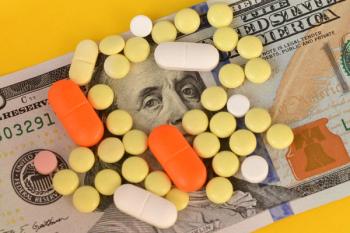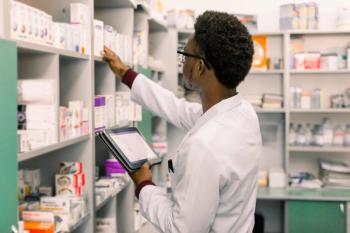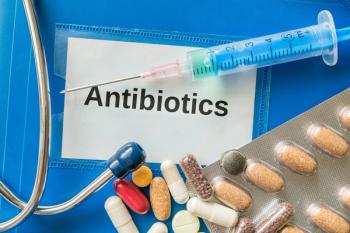
Pharmacy Access Determined by Drive Time Underestimates Inequality
Amid uncertainty about the best factors for measuring and defining pharmacy deserts, researchers explored the impacts of drive time and inequities in pharmacy access.
Measuring pharmacy access by drive time underestimated inequities in pharmacy access as well as the prominence of pharmacy deserts in the US, according to a study published in the Journal of the American Pharmacists Association (JAPhA).1
With many US patients not in possession of a private vehicle, researchers hope these findings can inform both public health and urban planning policies to potentially resolve the issue of pharmacy deserts.
“Communities that are both low-income and have low access to pharmacies are known as ‘pharmacy deserts’ and lack access to the wide range of services provided at pharmacies,” wrote authors of a study published in Health Affairs Scholar.2 “Pharmacy deserts disproportionately exist in rural or historically marginalized neighborhoods, compounding already existing health inequities experienced by these communities.”
READ MORE:
While it’s true they disproportionately impact rural communities, pharmacy deserts are also prominent in urban and suburban locales. According to Maxor National Pharmacy Services, rural areas become deserts when the closest pharmacy is accessed within 10 miles of a community, within 2 miles for suburban locales, and within just 1 mile for urban areas.3
Highlighting the significant discrepancies between pharmacy desert definitions, some experts choose to utilize mileage measurements while others use drive time. However, when determining the presence of a pharmacy desert, patients’ situations will significantly vary across urban, suburban, and rural locales.
With many studies focusing on drive time and mileage, previous research typically focused on patients’ ability to drive to their local pharmacy under the assumption all patients have access to their own vehicle. Vehicle access and the variety of locales experiencing a pharmacy desert may be working together to hinder general understanding of how they are defined.
“When access is measured solely by driving distance or time, some areas may be mistakenly classified as having optimal pharmacy access, even though residents without access to a private vehicle may still face significant challenges,” wrote authors of the JAPhA study.1 “The primary objective of this paper was to investigate whether measuring pharmacy access based on driving underestimates inequity in access, given the fact that not everyone has access to a vehicle.”
Researchers used geographic information systems to measure pharmacy access across the US. Their key method of accounting for study participants’ transportation access was to target the 10 metropolitan and micropolitan statistical areas with the largest US populations. These specific locales were chosen due to the feasibility and availability of different transportation methods in these areas.
The 10 cities that were explored included Atlanta, Chicago, Dallas, Houston, Los Angeles, Miami, New York, Philadelphia, Phoenix, and Washington DC. Furthermore, researchers obtained data for pharmacies within 100 kilometers of a metro and generated the 40-minute drive time to include all possible pharmacies and populations.
Of the 61,715 open-door (community) pharmacies in the country, 23,090 were located within the 10 locales included in the study. Regarding pharmacy access in general within these areas, more than 95% of the census block groups in these locales were within a 20-minute drive of at least 1 pharmacy per 10,000 people.
Like many studies before this, overall pharmacy access is significant among some of the most populated areas in the US. However, when separating access by drive time, transportation resources, and other factors, researchers uncovered significant disparities.
“Results indicate a wider disparity in pharmacy access based on walking and public transportation compared to driving,” they continued.1 “Access was considerably lower for public transit and walking transportation modes. Specifically, the proportion of block groups with access to at least one pharmacy per 10,000 people within a 20-minute travel time by public transit ranged from 31.5% in Atlanta metropolitan area to 76.7% in Miami metropolitan area.”
Through their findings in Dallas and Atlanta, researchers uncovered further discrepancies between the various methods of getting patients to a pharmacy. In Dallas, where 98% of block groups had access to a pharmacy within 20 minutes by car, access based on walking and public transportation was 81.8% and 34.1% respectively. Even more block groups (99.7%) had driving access within 20 minutes in Atlanta, but only 64.8% had walking access and 32.1% public transportation.
The researchers ultimately uncovered the persistence of health care inequities in pharmacy, pointing at challenges and road blocks within the definitions of pharmacy deserts. In one of the most commonly held sentiments, however, researchers support the fact that more needs to be done to increase pharmacy access in the US.
“In this article, we measured pharmacy access in the 10 most populated US areas using different modes of transportation. Results suggest that measures of pharmacy access derived solely on driving time will underestimate inequities in pharmacy access. Findings can inform urban planning and public health policies,” they concluded.1 “Efforts to improve pharmacy access should consider different transportation modes to ensure that all community members have adequate access to pharmacies, specifically in areas with a low rate of private vehicle ownership.”
READ MORE:
Don’t get left behind: Sign up today for our
References
1. Sharareh N, Tang S, Bress A, et al. Geographic access to community pharmacies based on walking, driving, and public transportation in the 10 most populated U.S. areas. JAPhA. July 18, 2025:102479. https://doi.org/10.1016/j.japh.2025.102479
2. Wittenauer R, Shah PD, Bacci JL, et al. Locations and characteristics of pharmacy deserts in the United States: a geospatial study. Health Aff Sch. 2024 Mar 16;2(4):qxae035. doi: 10.1093/haschl/qxae035.
3. Pharmacy deserts: a growing problem in the U.S. Maxor National Pharmacy Services. December 2, 2024. Accessed July 23, 2025. https://www.maxor.com/pharmacy-deserts/
Newsletter
Pharmacy practice is always changing. Stay ahead of the curve with the Drug Topics newsletter and get the latest drug information, industry trends, and patient care tips.





























































































































